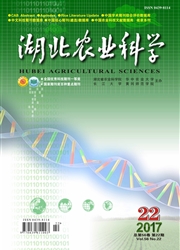

 中文摘要:
中文摘要:
基于1990、2000、2008年3个时期遥感影像数据,估算了渭干河流域不同时期的土地利用程度与生态系统服务价值,并利用ArcGIS空间分析功能对其空间特征与动态变化进行分析,探讨二者的相互关系。结果表明,①流域未利用地面积较大导致土地利用程度较低。1990~2008年流域平均土地利用程度综合指数为0.331 5,上、中、下游依次升高,该指数总体呈增长趋势,年均增长0.23%,变化动态度由大到小依次为下游、中游和上游。②1990、2000和2008年流域总生态系统服务价值分别为2 722 484万、2 709 389万和2 662 851万元,总体有所下降,林地、草地、沼泽面积的减少是其主要原因。下游未利用地面积小、林地比重较大,其单位面积生态系统服务价值为流域最高。研究期间上游生态系统服务价值略有增加,下游降幅较大。③生态系统服务价值随土地利用程度的加剧先增后减,增长期主要由于未利用地比重减小,减少期则表现为建设用地比重的增大,生态系统服务价值增加区域主要分布在流域上、中游,减少区域则中游略多于上游和下游。
 英文摘要:
英文摘要:
Based on the remote sensing images of 1990, 2000 and 2008, the land use degree and ecosystem services value of the Weigan River Basin was calculated, and the temporal and spatial variation and relationship in 1990-2008 was analyzed by the module of spatial analysis in ArcGIS. The results showed that the average composite index of land use degree in 1990~2008 was 0.331 5, increasing from 1990 to 2008 with an average growth rate of 0.23%. The lower index was because of the larger area of unused land. The average composite index was higher in downstream and lower in upper stream. Dynamic degree index was on the same trend. The total value of ecosystem services of area studied in 1990, 2000 and 2008 were 272.248 4×108yuan, 270.938 9×108yuan and 266.285 1×108yuan which showed a trend of decline. The main reasons were the reducing of forest land, meadowland and wetland area. The value of ecosystem services per unit area in downstream was more than that of upper stream and middle reaches because of the larger forest land area and smaller unused land area. The ecosystem services value in upper stream increased slightly and downstream showed a larger decline. With the increase of land use degree, the ecosystem services value increased first and then decreased. The growth period was mainly due to the decline in proportion of unused land area, and the increasing in proportion of construction land area was the main reason in decline period. The spatial difference in change of land use degree was insignificant. The regions with increasing ecosystem services value were mainly located at upper stream and middle reaches, while the regions with reducing ecosystem services value in middle reaches was more than that of upper stream and downstream.
 同期刊论文项目
同期刊论文项目
 同项目期刊论文
同项目期刊论文
 期刊信息
期刊信息
